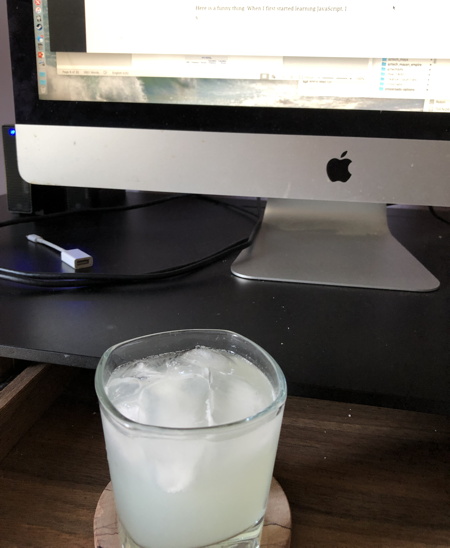Statistics as social justice
 To be honest, when I first began studying statistics social justice never entered the equation. Like most people in America, I think, I was concerned about problems like crime, poverty, low educational attainment of minority groups. Like most people, my concern didn’t translate into much actual effort on my part.
To be honest, when I first began studying statistics social justice never entered the equation. Like most people in America, I think, I was concerned about problems like crime, poverty, low educational attainment of minority groups. Like most people, my concern didn’t translate into much actual effort on my part.
No, I took my first statistics course because it seemed really interesting. I made a C+ in it because it was Monday, Wednesday and Friday afternoons and the fraternity parties started on Friday afternoon, so I missed every third class. When later research of mine showed a negative correlation between absenteeism and grades I was not surprised. I had personal experience. I mentioned this too, because I have seen too many women and minority students discouraged from science and technical fields when they were not at the top of the class right away.
It’s a very long journey for my first statistics class in 1978 to now. Although I started learning statistics because I was just very interested in what I would call “messing around with data” and I like programming a lot, along the way I learned something interesting.
A lot of money is allocated based on statistics. Maybe not directly so, not very often does someone say to you,
“That’s a very interesting statistic. Have $9 million!”
Statistics do come into play. About 1/4 of a century ago, I realized that grant money often did not go to the program where the funds were needed most or the staff were most effective. No, they went to the programs that would best at writing grant proposals. These proposals included statistics on needs assessment and evaluation of prior efforts. Often, people who were really good at helping low income students raise their academic achievement or getting people with substance abuse disorders off of drugs were nowhere near as good at writing grant proposals.
For all of those proposals, statistics were required. What proportion of students in the target schools are achieving below grade level? What was the distribution of test scores of students in the previous three years and how does that compare to the state or national average? What evidence is there that the proposed program for academic enrichment will have any impact on the students at all?
Often, my very well meaning colleagues disagreed with the necessity for this type of analysis, even while they appreciated me doing it and made good use of the grant funds. Their point of view was that they knew what worked in their classrooms or clinics.
Personally, I feel that if all I had done in my career was bring tens of millions of dollars in grant money to programs that apply those funds to do good in their communities that would have been a satisfactory accomplishment. However, I’d like to argue that I did a little bit more good than that because I disagree with some of my esteemed colleagues that, “I know it when I see it“, is adequate for determining program effectiveness.
I can give you many many reasons why statistics are essential. First of all, something I have seen over and over in my career is that what gets measured gets done. If you are measuring the number of tutoring sessions or the number of times students play your games or the duration of those sessions, that allows you to correlate the “dose” of treatment your students received with the “response” in terms of increased achievement.
Many times, I have seen programs that were initially judged ineffective because everyone who came through the door was lumped together whether they were seen 10 times, once or not at all, having left before they ever saw a tutor counselor or whatever. Tracking your interaction with people allows you to determine whether you are effective for people who spend some substantial amount of time with your program. It also lets you tell what percentage of the people fall through the cracks that is who come in, fill out a form to be part of your program and then drop out almost immediately.
In brief, effective application of statistics cannot only help you obtain money but also see that money from federal agencies, foundations, etc. is intelligently applied.
If you are interested, I will be speaking at the Society For the Advancement Of Chicanos And Native Americans In Science annual conference in Long Beach on Saturday , Discovery and Societal Impact with Statistical Science. You can come to hear much more on this topic (or just read my next blog post).
———

